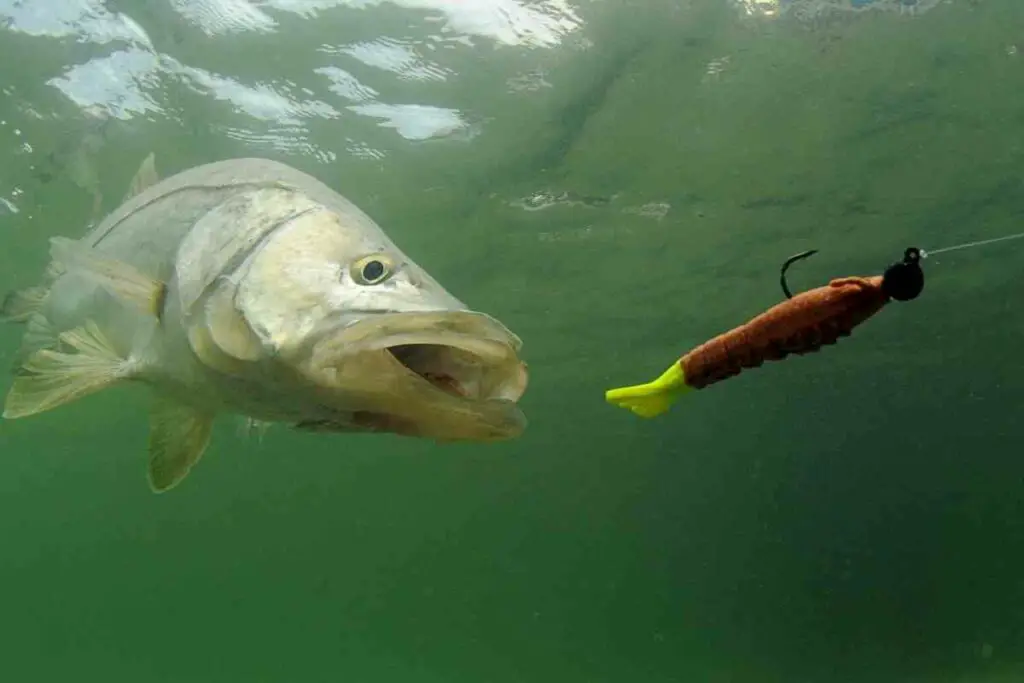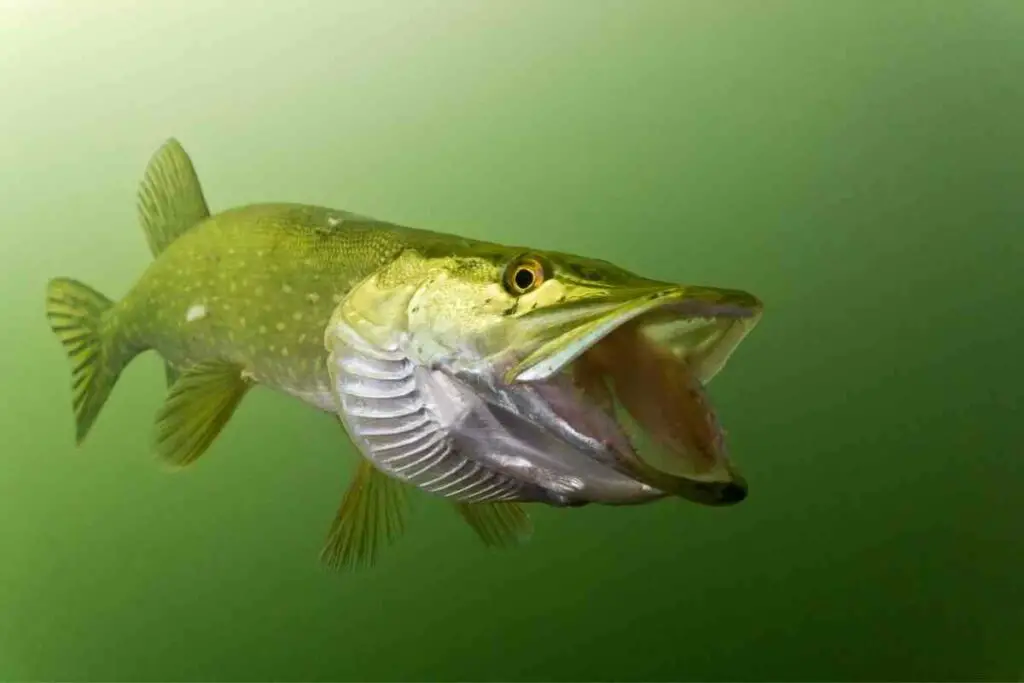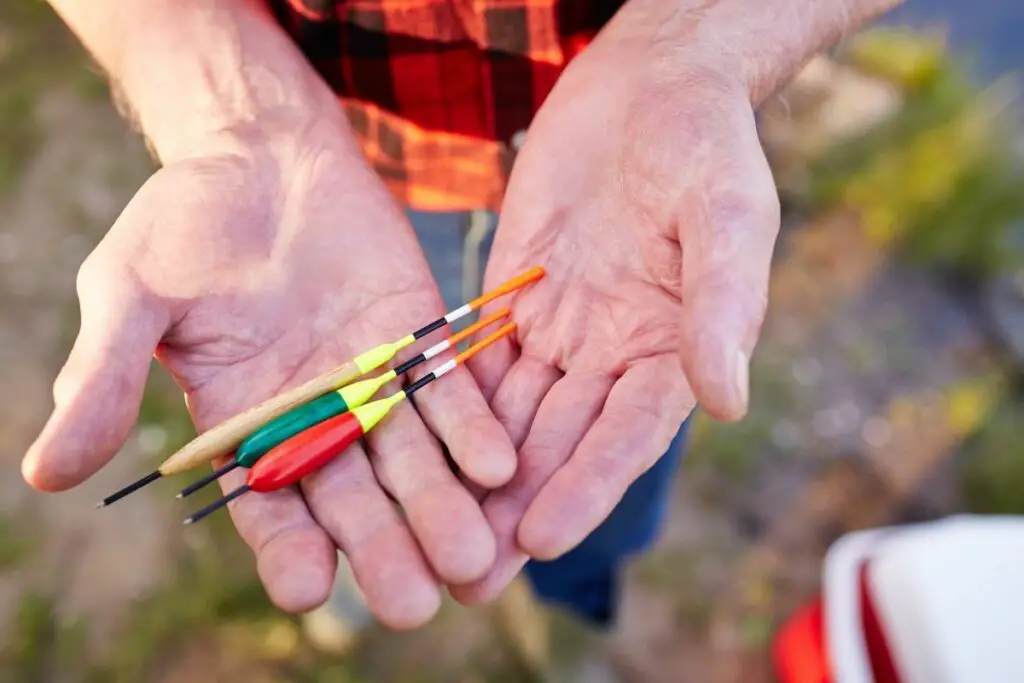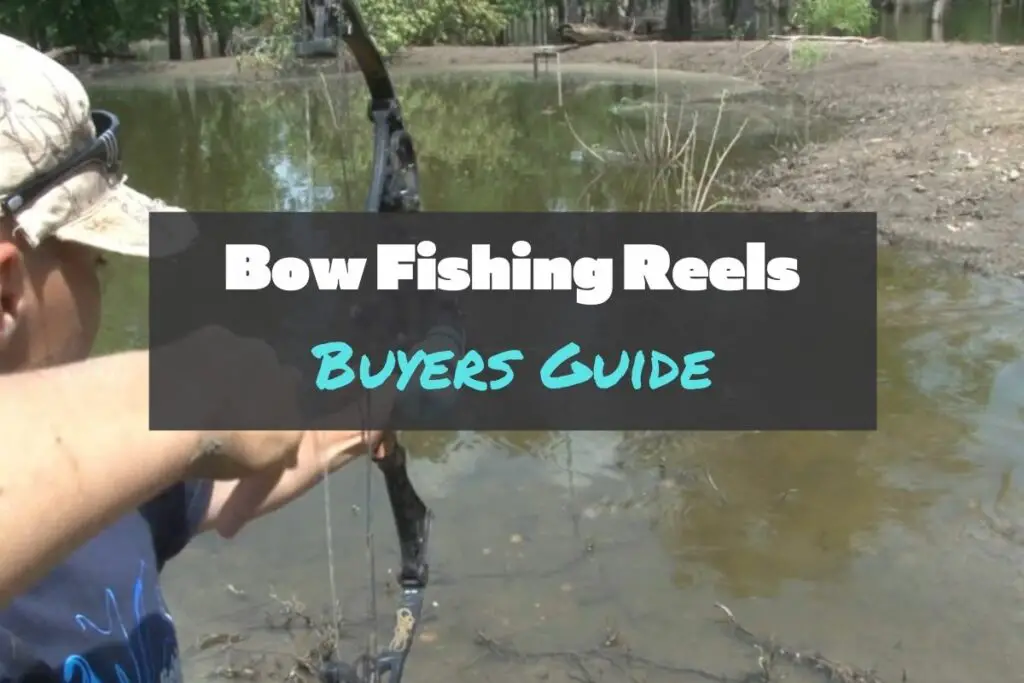
If you are a beginner angler looking for some tall stories to share with friends, the bluegill (Lepomis macrochirus) is a feisty fish that will give you a good run for your money.
This perch-like freshwater fish delivers year-round angling joy meaning you can put your tackle to work and hone your technique as the seasons change.
In this article, we will equip you with the essentials for catching bluegill in summer and winter.
This beginner’s guide will explain why bluegill is a great catch, top tips and techniques for productive fishing of this plucky and popular North American sport fish.
Table of Contents
Why Bluegill Is a Great Fish to Catch
Just say the word “bluegill” to a North American angler and you are bound to get a smile.
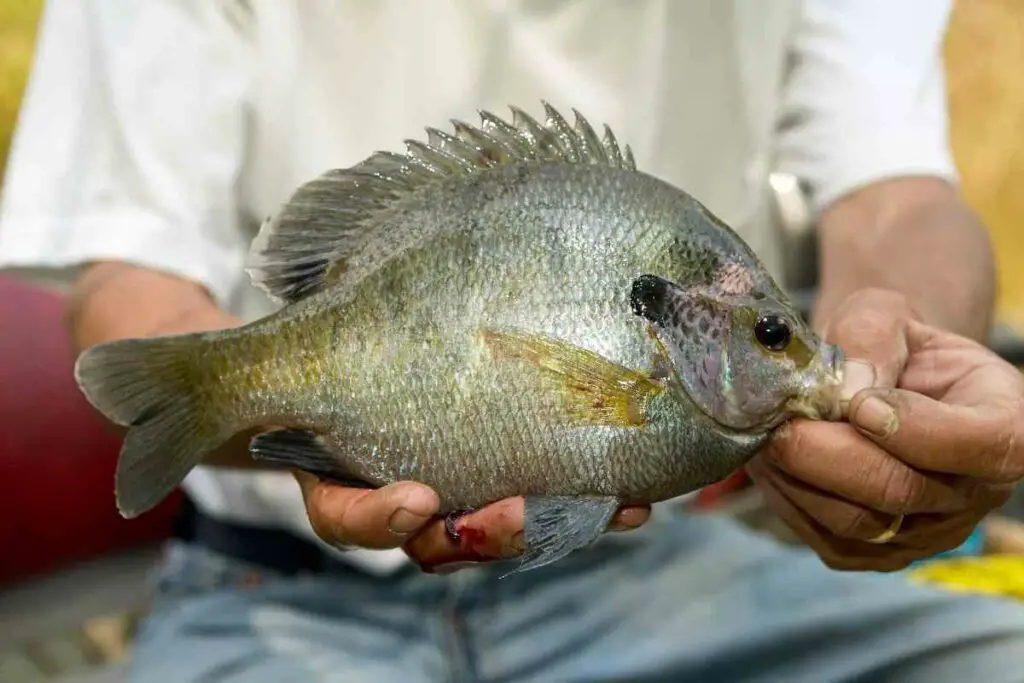
It is an incredibly popular fish and has even earned a spot as the State Fish of Illinois!
The character of this little fish really speaks to the American love of the outdoors and can-do attitude.
Here are some great reasons to catch bluegill.
Bluegill Colour
You will certainly know bluegill when you see one!
They have incredibly distinctive colouration with the characteristic bluish-purple gill and face area, green body with perch-like deep-green bands, and fiery orange belly.
It also sports a black spot, or “ear” at the edge of its gill cover.
The Smell
Bluegills are prolific breeders and their spawn has a characteristic odour that will let you know that they are nearby.
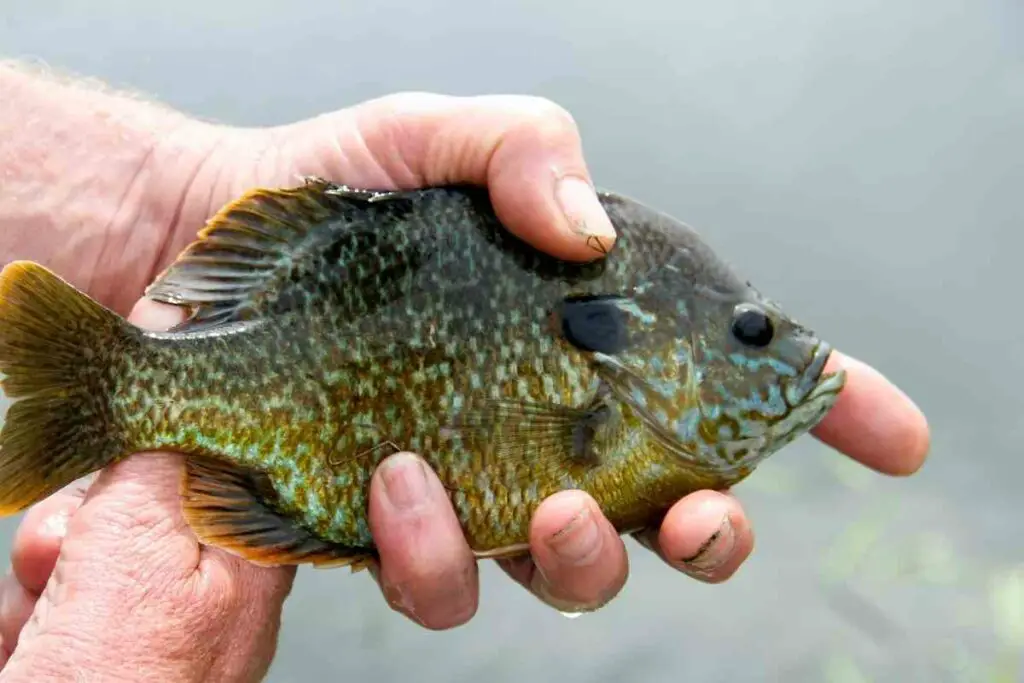
It is a sweet, fruity but distinctly fishy smell that is highly recognisable and you’ll smell it every Spring when they are spawning!
When you smell the smell, it is time to weigh anchor and get out your tackle.
Bluegill Are Everywhere
If you have a river, stream, creek or lake near you anywhere from the Rockies to New York, you are likely not far from a bluegill or two.
They are distributed across the entire United States and have even spread to Europe, South Africa and even as far as Australia where they are considered a pest.
Bluegill can even tolerate salinity, with these fish being found in the Chesapeake Bay.
You will find them in the shallows of lakes and ponds. Bluegill love vegetation, where they can hide and spawn, so look for them near fallen logs, weeds or other structure.
The water needs to be warm with a temperature range of 16 to 27 degrees Celsius (60 to 80 degrees Fahrenheit).
Though they enjoy the warmth, bluegills tend to cruise deeper water where they can feed on plankton and other small creatures.
You Won’t Need Heavy-duty Tackle
This is a great beginner fish because you can go light on your rod and reel.
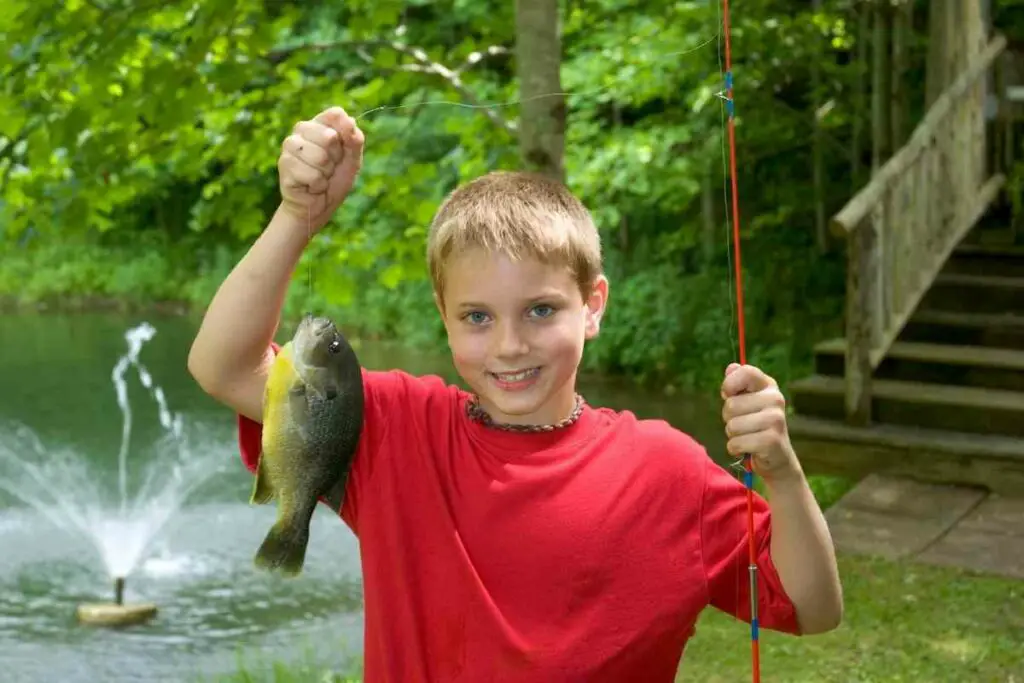
At most these fish are 12 inches long and bluegills over 3 pounds in weight are exceedingly rare!
Bluegill Don’t Travel Alone
If you’ve got bluegill, you are likely to have crappie, smallmouth, and pumpkin seeds.
This is because bluegill often travels in mixed schools of up to 20 fish with these species.
Bluegill Can Make Every Angler Feel Like a Pro
There are as many ways to catch a bluegill as there are bluegills!
This is the original fish of childhood fishing with a cane pole, a hook and a piece of string.
You can catch bluegill with:
- Spinners
- Fly-fishing
- Live bait
- Bobbers
- Ultralight lures
- …and more!
The variety of tactics for catching bluegill means you can quickly gain confidence in catching these fish.
Read on for the basics to help you get started.
Yes, the Bluegill Is as Scrappy as They Say
You’ll admire just how fearless and strong this little fish is.
Some anglers can hand feed them and on the hook, they will put up a good fight!
The Memories
This is a fish of childhood, or family afternoons down on the lake or long summer evenings with lifelong friends.
As a popular panfish, the eating is good too. Bluegill evoke rich memories for many anglers as it is part of their introduction to the world of fishing.
How to Catch Bluegill All Year Round
It is easiest to catch bluegill in the spring and summer when they are spawning.
The numbers of fish massively increase and localise near vegetation and relatively shallow water.
In warmer weather, the margin of vegetation is an ideal location for these fish.
As the year progresses towards winter, you need to cast your bait in deeper waters, but you won’t have to try too hard to find them.
Bluegill Tackle
Bluegill is the first fish for many anglers and does not require overly heavy or technical gear.

Keep things simple and light and you should have great success catching bluegill in summer and winter. Here are the basics you need.
Bluegill Rod
Bluegills aren’t big so an ultralight spinning rod of no more than 6 feet is more than up to the job.
Reel for Bluegill
Complement your spinning rod with a small and manageable reel.
A 1000 series spincast or push-button reel is more than adequate for casting the lightweight baits and lures that you use for bluegill.
If you want better retrieve speed, and line capacity you can always increase the reel size to 2000 which may help in fishing bluegill in deeper waters through the winter.
Line for Catching Bluegill
The size of bluegill means that you can make a success of catching it with any of the main line types with a breaking strength of four pounds or more.
Choose from:
- Monofilament line: this larger diameter line is cheap and easy to work with, though it doesn’t age well in some cases.
- Braided line: this is a woven line made up of many fibres. It is thin, strong and durable. It is not absolutely needed for bluegill but is a decent investment if you master knotting it securely.
- Fluorocarbon line: the line is transparent underwater making it a great pairing for fishing bluegill.
Bluegill Terminal Tackle

- Hooks: a size 8 hook is standard for bluegill, but anglers have success with hook sizes between 6 and 10. Larger hooks reduce the risk of the bluegill swallowing the hook. Remember that your catch is likely to be small so choose a hook with a long shank so you can easily remove it from the bluegill’s mouth. Thin wire hooks a good for attaching the smaller sized bait that you will need.
- Spinners: bluegill are opportunists so small or mini spinner lures can be effective. Spinners are more popular for fishing bluegill in the spring and summer months when they are more active in shallow water.
- Floats: you can float fish bluegill, just like other panfish, with a variety of floats. If you are fishing in dense vegetation, a bubble float may be a helpful choice, especially if the water is skinny.
Best Bluegill Bait
Keep bluegill bait very simple.
These little fishing will eat anything they can fit into their mouths, so all sorts of cheap and easy bait are on the menu!
Popular bluegill bait options include:
- Worms aplenty, including: pan fish worms, small Worms, night crawlers, and wax worms
- Pantry staples like: Canned sweet corn, torn up burger buns, stale bread, old hot dog buns, canned hot dogs, Slim Jims
- Livebait such as: minnows, baby crawdads, small insects and crickets.
Catching Bluegill In the Summer
Spring and summer offer easy fishing of bluegill, especially when you target their habitat (described above).
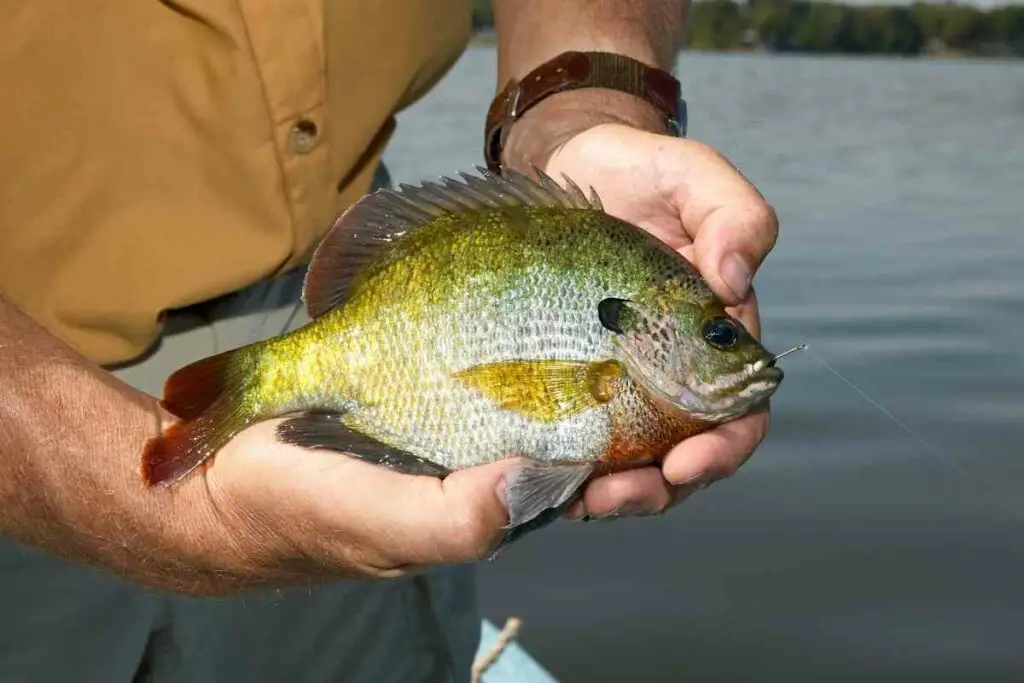
Here are some quick tips for productive summer fishing for bluegill:
- There can be big fish in deep and open water. If you are determined to land a big boy, understand that these fish will not be in shallow water and are uninterested in little bait. This is how they get big and live long lives. These fish eat other fish and need a decent live or meat bait on a line that is sunk to the bottom.
- Head off the beaten track in a kayak or Jon boat for unexpected bites. The obvious catches are in the obvious places that may be over-fished in the summer months. Navigate and explore waterways where other anglers aren’t fishing for larger fish and better bites.
- Yes, you can send down some stale bread but live bait will always work best. These fish are opportunistic predators and enjoy the authenticity of live bait.
Catching Bluegill In the Winter
Many anglers target bluegill in the spawning season in spring and enjoy bites through the summer months.
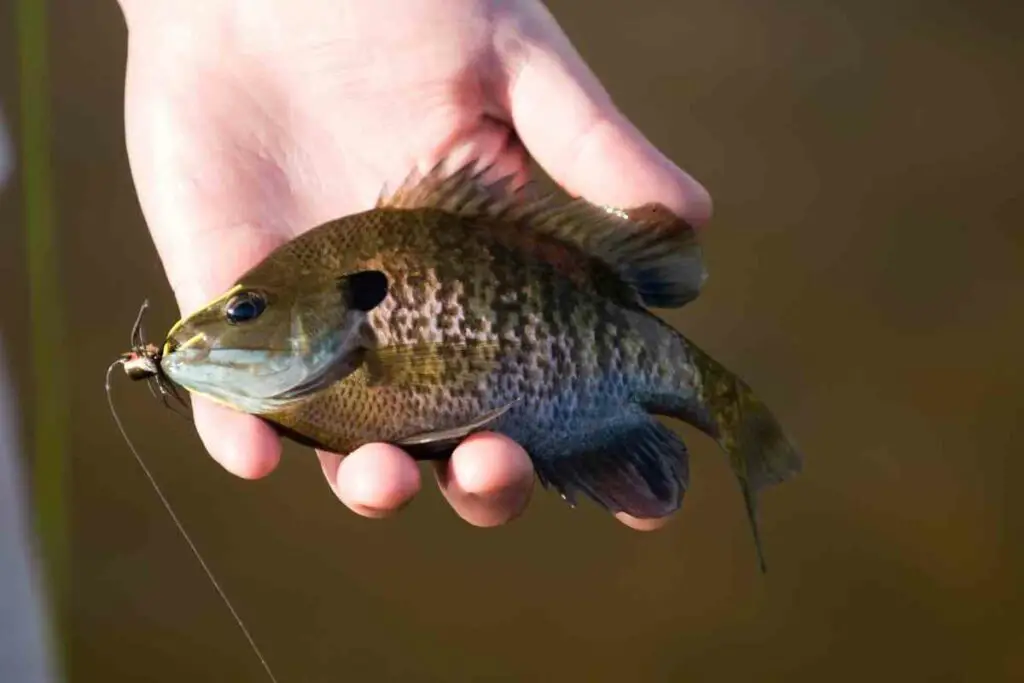
It perhaps does not occur to them that these little fish are also feeding through the winter:
- You can catch just as many bluegills in winter as you would in summer but be prepared to alter your tactics.
- Bluegills are more lethargic in winter so you have to get your bait deep down to them with bottom fishing to entice them to strike.
- In cold weather, fresh bait is going to be greatly appreciated by the bigger bluegill. Worms and crickets are much better motivators than soggy bread in mid-winter!
- Many anglers will ice-fish for bluegill. Jigging with lures that have fluorescent paints can be very effective and earn you a meal of bluegill and other panfish.
Rounding Up
You’re just about ready to hit the water and land yourself some bluegills.
Bluegills are fish you will want to catch over and over again.
Build up your confidence and experience on the bluegill and you will have the skills and instincts for catching other panfish and perhaps larger targets!


